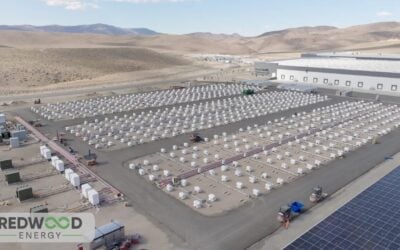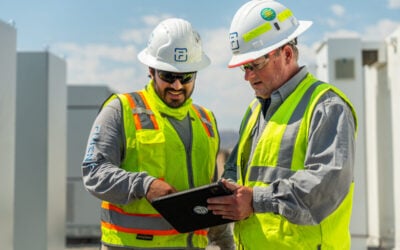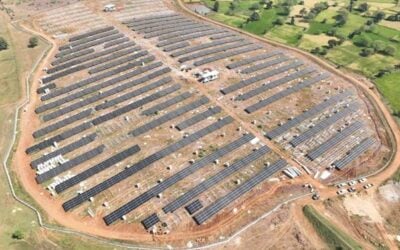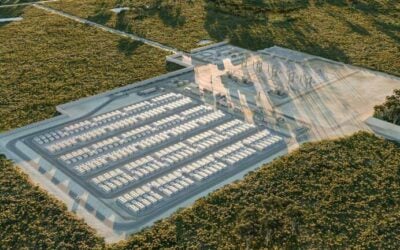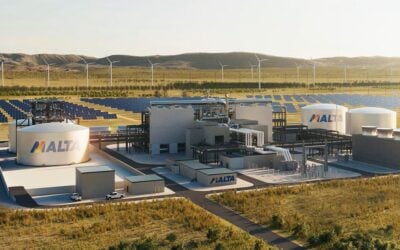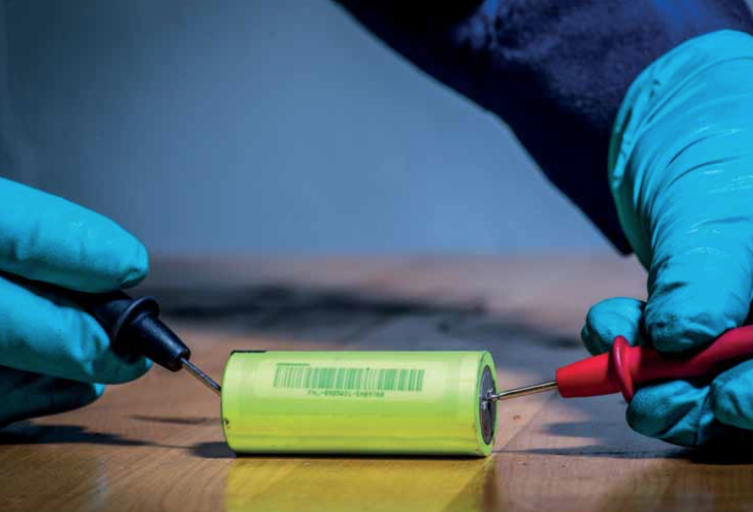
Lithium iron phosphate (LFP) batteries from manufacturers CATL and Narada are among those ranked highest performance for stationary energy storage applications in DNV’s new ‘Battery Scorecard’.
The performance assessment group published the fourth edition of the annual scorecard report last week. DNV looks at topics such as who the world’s biggest battery providers are, how batteries degrade, what their useful lifetime is and how safe batteries are. DNV also evaluates 19 battery cell types through a testing programme.
Enjoy 12 months of exclusive analysis
- Regular insight and analysis of the industry’s biggest developments
- In-depth interviews with the industry’s leading figures
- Annual digital subscription to the PV Tech Power journal
- Discounts on Solar Media’s portfolio of events, in-person and virtual
Cells are therefore evaluated through a number of categories and for their performance in applications including grid support services requiring less than two hours of storage duration, four-hour solar shifting and high-power vehicles.
DNV also looks at calendar fade, optimisation of battery management system (BMS) and safety from the perspective of thermal runaway and off-gas protection.
While many manufacturers which took part preferred to remain anonymous, both CATL and Narada allowed for their names to be publicly disclosed, which must have been all the sweeter as theirs were in the top three performers among LFP cells for stationary storage applications in both <2 hour and 4-hour applications.
CATL also topped DNV’s table of top 10 battery cell manufacturers by production volume for 2022, with 132GWh of total cell production, ahead of LG Energy Solution in second place (93.9GWh) and Panasonic in third (60.1GWh). See table below for the top five as included in the Battery Scorecard.
| Manufacturer | Total cell production in 2022 (GWh) |
| Contemporary Amperex Technology Ltd (CATL) | 132 |
| LG Energy Solution | 93.9 |
| Panasonic Corp | 60.1 |
| BYD Co Ltd | 58.6 |
| Samsung SDI | 47.1 |
DNV noted that those results included all battery cells produced across the electric vehicle (EV) and stationary energy storage system (ESS) sectors, although most battery cell manufacturers sell more than 90% of their products into the EV segment – with a few “notable exceptions”.
Comparing manufacturers, chemistries and alternative technologies
Back in 2019, DNV energy storage expert Davion Hill, who has since left the group to form his own battery storage development business in the US, wrote an article for this site about the scorecard and how different methods of evaluation were essential to “ease the risks”, as existed then, of investing in battery storage.
The 2022 scorecard includes plenty of useful information for decision-makers on battery cell technology and how to compare different cell types.
In terms of safety, there are two important temperature parameters to bear in mind when it comes to thermal runaway: venting temperature, at which built-up gases are released to avoid rupturing cell casing, and the onset temperature at which thermal runaway occurs.
Safety testing results remained anonymous, but DNV noted that venting and thermal runaway onset temperatures are “vastly different” across cells from different manufacturers and with different chemistries.
For instance, an LFP cell was found to have both highest venting and thermal runaway onset threshold temperatures, but in some instances other LFP cells were outperformed in one or the other metric – or both – by nickel manganese cobalt (NMC) cells.
The scorecard also includes a section which looks ahead to what the industry can expect to see in EV and ESS battery development in the coming years.
DNV broadly expects lithium-ion batteries to continue having a dominant market share in both transport and stationary applications, but with improvements expected in areas such as energy density, durability, performance and safety.
Raw materials for cathodes are currently rising in price, particularly cobalt and lithium, due to demand growth and supply constraints. Meanwhile, it is yet to be determined which of NMC or LPF cathode chemistry batteries will emerge as the most popular choice, with each having distinct advantages and disadvantages.
In terms of electrolyte, batteries with solid electrolyte materials as opposed to liquid electrolyte materials used today were identified as promising due to safety advantages, as well as potentially higher energy density, longevity or stability. However, DNV said claims of this nature are as yet unproven commercially.
Silicon is being considered as a replacement for graphite in battery cell anodes, as it could hold 10x more lithium than graphite. However, it has been observed that silicon used in battery cells can swell in size as lithium ions are inserted, much more than graphite does, posing a potential risk of cell damage. Anodes combining silicon and graphite could be a compromise.
Meanwhile, non-lithium and long-duration energy storage (LDES) technologies are expected to “gradually expand into niche markets” over the next three to five years, largely beginning from regions where renewable energy penetration exceeds 50%.
Policy drivers could also accelerate adoption, according to DNV, although LDES technologies still have some way to go to reach capital costs of significantly lower than lithium-ion, with a target of US$20/kWh or less. Off-takers also need to value LDES highly enough to invest in it, markets need to be assured of their safety aspects and, perhaps most importantly, there needs to be more testing and vetting of the technologies by third parties to build market confidence.
LDES tech commonly has lower roundtrip efficiencies than Li-ion’s 90%+, some have slower ramp rates too, making them less suitable for high power, shorter duration applications and nearly all have lower energy density than lithium, making them heavier and with a larger footprint.
According to DNV, there are really four criteria that are the most important in technology supplier selection:
- ‘Start with the cell’: As the core component of all battery energy storage systems (BESS), cells determine performance, safety and cost. Customers should be aware of which manufacturer supplies cells for a battery system and how long that cell has been in production for.
- ‘Evaluate total deployments of cells and systems’: More reliable products will have seen more field deployments and therefore will have undergone more iterations to improve their key characteristics.
- ‘Request the Bankability Report’: Customers should see independently vetted Bankability Reports on suppliers’ products, which reputable suppliers should be happy to share with potential customers, DNV said.
- ‘Request independent test data’: Again, independence is the key word. Independent test data should be requested by all customers to see validation through testing of battery performance, warranty claims and safety.
DNV has made the Battery Scorecard freely available to the public, including a new ‘online dashboard’ feature, all of which can be accessed here.

